I’m only just back from Las Vegas, and already I need to turn my head away from Standard and Modern Masters 2015 Limited towards the newest competitive Magic format: Modern. After the Grand Prix, I had a lot to focus on while I was in Vegas, and while I spent most of my time prepping for Standard for the $50K there, I also kept my eyes on Modern. Even though I intended to get some in-person playtesting in for Modern, everyone I tested with here was focused on Standard, so all my Modern testing had to be online.
For me, this recent Grand Prix in Vegas marked my first time in the city, and I made the best of it I could. My real-world highlight of the trip (lowlight?) was finding my car towed the morning of the $50K because Traveolocity had issued me a car with expired tags. Awesome. It definitely put me in the wrong kind of mood to start my tournament, and even though I ended up in the Top Eight, I started out with quite a few losses before I got my head back on.
There were more than a few moments that I found the Standard portion of the event inspiring for outside-the-box thinking. One of my favorite moments was playing against fellow Wisconsinite Jeremy Barbeau with his awesome Sultai Reanimator deck. Yes, this deck has existed in Standard in the past, but Jeremy had been working on it for a long time, and, as he put it during our feature match playing for Top Eight in the final round, “why couldn’t I have played either of those guys?”, referring to the other players in the match next to us.
What was inspiring about that moment was the recognition that there were still ways to play “rogue.”
On Being Rogue
A rogue deck isn’t different for difference’s sake. A rogue deck is a good deck (or even a great deck) that just isn’t something people expected to play against. Back in the ancient days of Magic when information didn’t spread nearly as far and as fast as it does now, a rogue deck might actually be the best deck in the format but people just didn’t know about it yet. This was the era where I really initially made my name, by finding decks that people hadn’t considered.
When a rogue deck was the best deck, it might not even make a full splash unless it had time to catch on. Back over ten years ago, when I made “Kooky Jooky” with Adam Kugler and some help with my old think tank, Cabal Rogue, it definitely seemed like it was the best deck in Standard, beating what was regarded as the best deck – Affinity – handily, and crushing most other decks besides. No one saw that deck coming, but soon after the format changed, so it didn’t get a chance to catch on.
Things are a bit different now.
We can expect that if a deck takes several events by storm, simultaneously, everyone will know about it almost immediately. Magic Online will collectively take up a deck and discover their merits, honing it like a knife. The Magic Dailies will build up quickly with the deck, and it will either be adopted or discarded fast depending on how well it performs.
Still, there is a way to be rogue. What does that mean, though?
A rogue deck is not a mainstream deck. It is also good, both against a commonly-expected metagame and against most random opponents. A rogue deck isn’t merely targeting one specific opponent with hate… instead, the deck is fundamentally doing something powerful on its own. A rogue deck gains its strength from potentially being outside the range of opponents being able to be prepared for it, and yet it must be fundamentally strong enough that it isn’t just going to fold to an opponent who happens to be able to fight it on its own terms.
The difference between being rogue and different for difference’s sake is one of personality archetype. The rogue deck is essentially the deck of a full-on Spike: the rogue is looking to win, not just showcase their cleverness.
Being ‘rogue’ sometimes came to be even directly associated with me and my associates. On the negative end of that, sometimes we were associated with attempts to “showcase our own cleverness,” though I’d contend that the reason we weren’t more successful than we were was simply that many of the members of Cabal Rogue, though good players, were simply not the pinnacle of players; for example, one of our members, Mike Flores, was nicknamed “Bad Player Flores.” Now, compared to the top echelon of Magic players, he certainly was a bad player – but compared to a typical player who took the game seriously, at his peak Mike was definitely well above the majority of those players.
Even to this day, I think all of us Cabal Rogue alum have that part of us that loves being rogue, even if it is a hard thing to accomplish in this day and age. I mean, just look at this deck and tell me if this deck wasn’t a bit off-the-wall to choose for an important tournament:
Creatures (10)
Planeswalkers (1)
Lands (27)
Spells (22)

With this kind of blood still running through my veins, in a format as big as Modern or Legacy, I’m always looking for decks that are rogue, even decks that are not my own. Take, for example, the last deck that I played in a Modern Grand Prix:
Creatures (18)
Lands (24)
Spells (18)

This was a very different take on the B/G/X midrange decks that we’ve seen in Modern. No discard of any kind is a kind of insane proposition, in some ways. Instead, I was set up to exploit the format with a few potent cards:
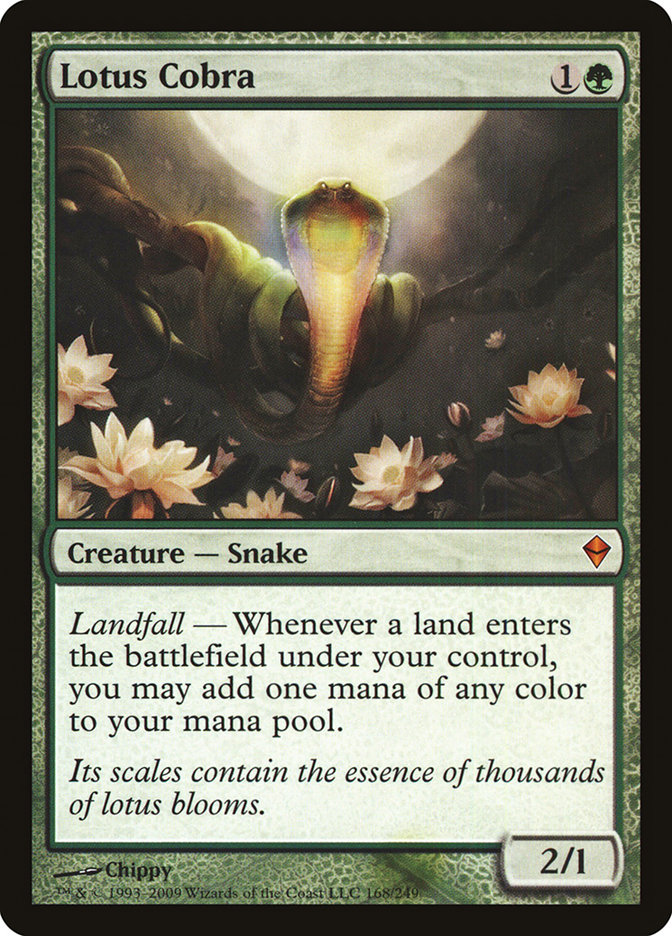

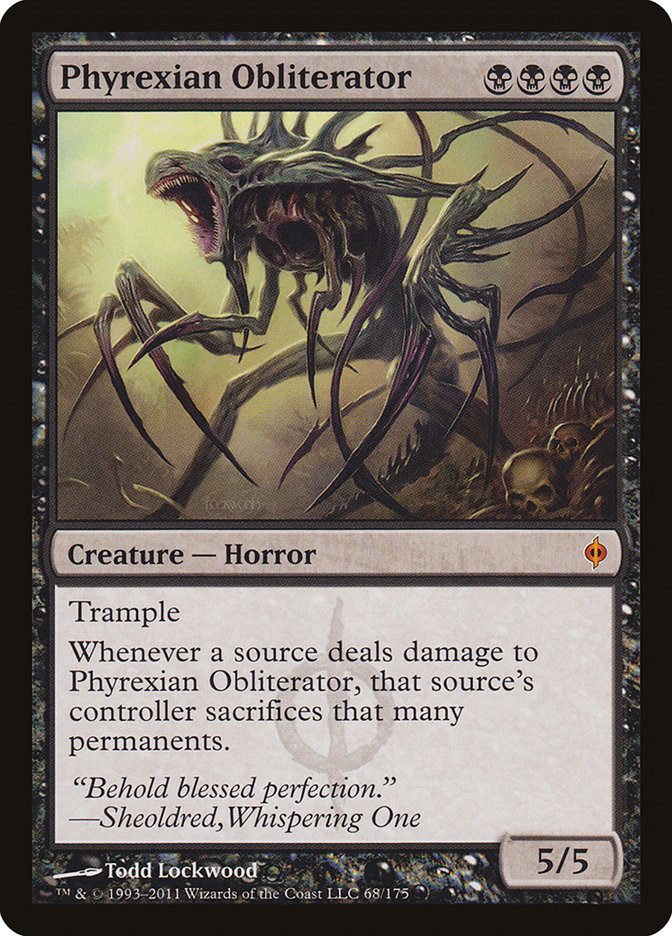
This was the world of Treasure Cruise. This was the kind of messed up world where a maindeck Chalice of the Void could end a game. Without access to one-mana spells, a lot of choices had to be made with how the deck was situated to properly make it coherent. That world is gone now, but even though it is gone, if I were to just take this 75 I’d still probably do fairly well at a Modern Grand Prix, just not with the exemplary record I’m shooting for.
Why is that? Well, the world has changed. This deck was made to fight a specific metagame that isn’t nearly as likely to be found right now. Importantly, both G/R Tron and Amulet Bloom, two very bad matchups for this deck, are popular. U/R Delver isn’t really seen in any numbers, and so, even though the deck is fundamentally sound, it isn’t the proper moment for this deck any more than it would be proper to play Grixis Delver at the Grand Prix in Minneapolis, when Affinity was king and there was no Kolaghan’s Command available to help out.
I’ve been keeping my eyes open, and here are a number of rogue decks that I think could be worth thinking about for Grand Prix Charlotte.
Deck One – U/W Control
Creatures (12)
Lands (25)
Spells (23)
- 2 Mana Leak
- 2 Serum Visions
- 1 Engineered Explosives
- 1 Remand
- 2 Shadow of Doubt
- 2 Spell Snare
- 1 Pact of Negation
- 2 Cryptic Command
- 4 Path to Exile
- 1 Deprive
- 1 Azorius Charm
- 3 Supreme Verdict
- 1 Valorous Stance
Sideboard

Jeff Hoogland strikes again with a Dragonlord Ojutai deck that takes many of the classic ideas of U/W Flash-style decks and inserts Dragonlord Ojutai into it as a super-charged Thieving Magpie.
If you’ve ever been hit with a Dragonlord Ojutai in Standard, you know how painful that feels. In Modern, though, it feels even worse to get struck by the powerful Dragonlord – the cards your opponent can fetch with Ojutai are just so much scarier.
There are some small quibbles I would have with this deck, but they are pretty minor. For example, I’m not so sure that I like Kitchen Finks in this deck, preferring Blade Splicer. In addition, as much as I love Deprive (and I do love Deprive), I don’t know how much I like the card in a deck that is looking to cast a five-drop Dragon. Finally, I think I’d like to see the Supreme Verdict in the sideboard shift into being a Wrath of God – regeneration can be a huge problem sometimes, and Wrath simply doesn’t care about your silly little regeneration.
That being said, those are very minor quibbles, and I can certainly believe that Jeff has been working hard on this deck and his decisions are sound. I’ve also been working on a U/W Control deck, but I haven’t quite gotten it finished yet so perhaps his conclusions are just ahead of where mine are at for this deck. In any case, I really love what I’m seeing here.
Deck Two – Dredgevine
Creatures (26)
- 4 Golgari Grave-Troll
- 3 Stinkweed Imp
- 3 Bloodghast
- 4 Vengevine
- 1 Vengeful Pharaoh
- 4 Gravecrawler
- 4 Lotleth Troll
- 3 Gurmag Angler
Lands (22)
Spells (12)
Sideboard

I actually can’t remember the last time that I saw a Dredgevine deck in action but it has been a very, very long time. The deck actually has quite a few enablers to get things going, with several discard outlets and several dredge cards.
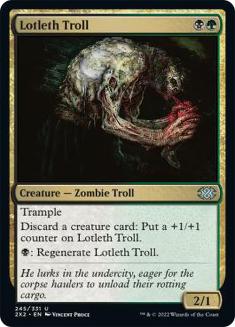
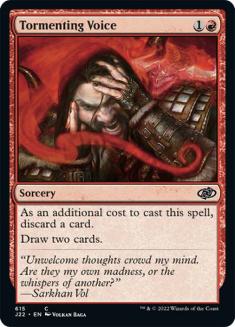
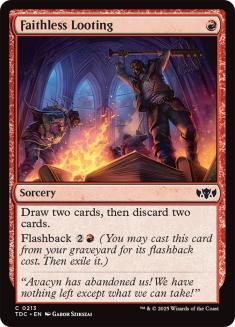
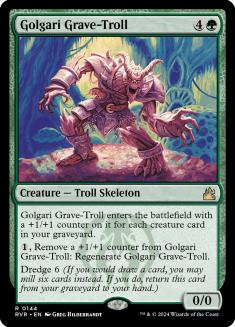
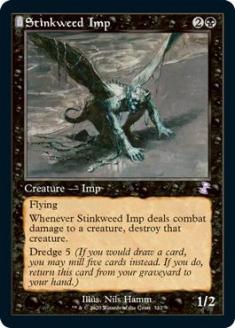
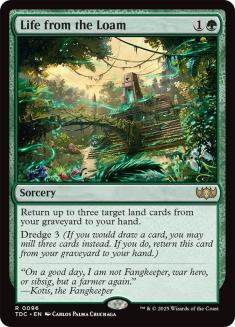
Once you have things going, between Bloodghast, Gravecrawler, and Vengevine you have some very powerful effects going on from the graveyard. On top of all that, Gurmag Angler is a wildly-efficient monster when you can plan on having a full graveyard.
The sideboard contains a good amount of hate for all of the usual suspects, and the two copies of Leyline of Sanctity are hardly a liability in a deck with so many ways to simply discard things that are no longer of any use. This deck is probably a nightmare for fair decks to deal with.
One of the most interesting cards in the deck is Vengeful Pharaoh, a card I hadn’t thought of in a long time. I would expect that Vengeful Pharaoh would probably be a nightmare for some decks, and just seeing the card again has my brain going into overdrive trying to figure out if there are other good homes for it.
Deck Three – Tooth and Nail
Creatures (17)
- 3 Eternal Witness
- 1 Acidic Slime
- 4 Arbor Elf
- 1 Emrakul, the Aeons Torn
- 1 Primeval Titan
- 1 Spellskite
- 1 Scavenging Ooze
- 4 Voyaging Satyr
- 1 Xenagos, God of Revels
Planeswalkers (4)
Lands (22)
Spells (17)

Suffice it to say, I thought this deck didn’t exist any more. I love that this deck has a one-spell kill from Tooth and Nail:
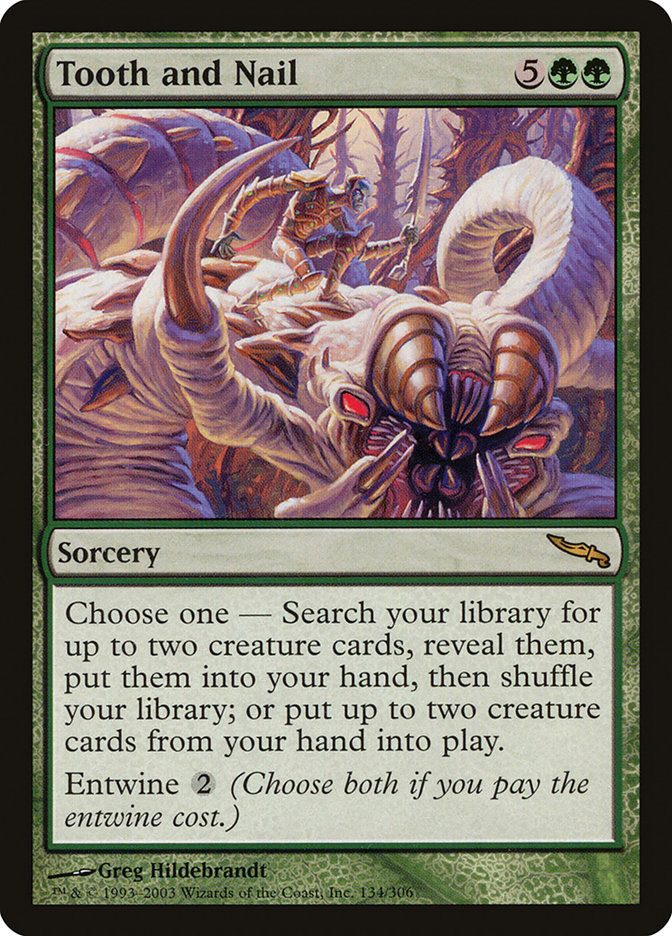
Typically in the past, you’d be able to cast this spell and entwine it for the win. No difference now with this intensely awesome kill combo:
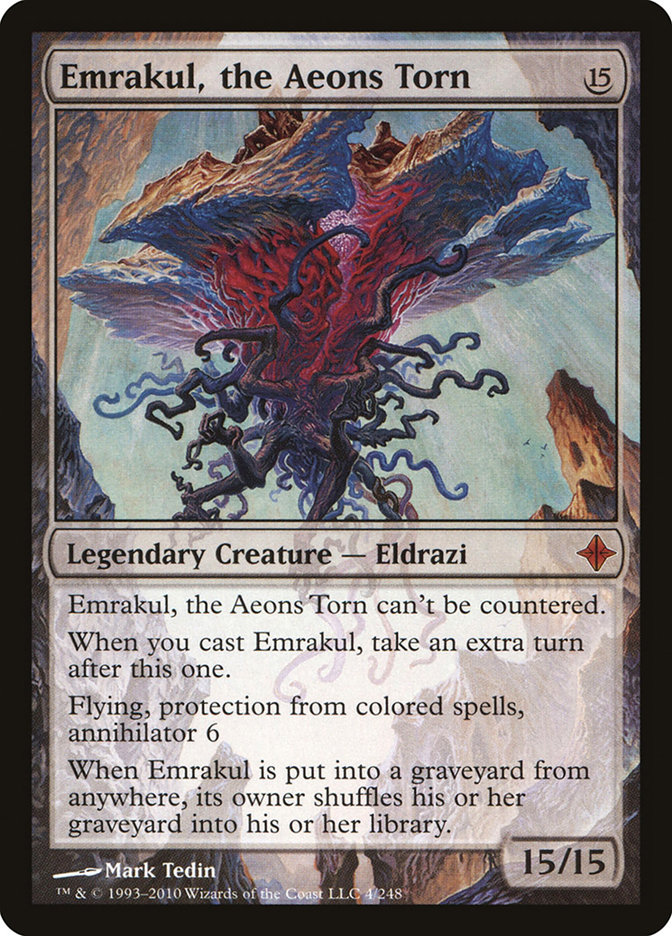
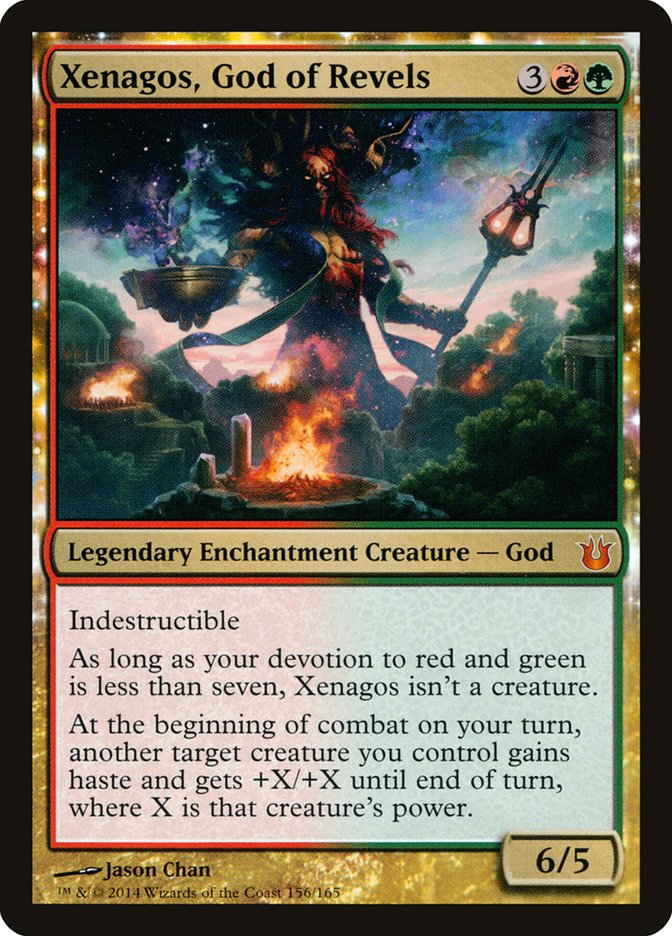
I did not see that coming. Put those two into play, and suddenly Emrakul is on its way in for 30 damage and just in case your opponent probably loses most of their permanents too.
In a world filled with unfair ways to play the game, I can see this deck struggling against some of the other unfair plays that a deck might make, but that being said, this combo is just so awesome that I’m willing to look past it. Besides, the deck does have its own absurdly fast mana creation: turn one, drop an Arbor Elf; turn two drop a Utopia Sprawl. From there, you have four excess mana to be able to work with to cast any combination of craziness – including Garruk Wildspeaker to keep going even further.
In fact, it’s possible to get the win on turn three! Sure, that’s not likely, but most combos can’t reliably get there on turn three.
I’m not sure what you’d need to do to get this deck ready to fight against another unfair deck like Amulet Bloom, but I do think that would have to be a part of the plan. I’m certainly confident this deck would be an excellent choice if you didn’t expect much in the way of unfair opponents. Unfortunately, that is exactly what I expect in Charlotte.
Deck Four – Superfriends Time Warp
Creatures (3)
Planeswalkers (10)
- 2 Garruk Wildspeaker
- 1 Jace Beleren
- 1 Gideon Jura
- 1 Venser, the Sojourner
- 1 Tamiyo, the Moon Sage
- 2 Jace, Architect of Thought
- 2 Narset Transcendent
Lands (24)
Spells (23)
- 3 Time Warp
- 4 Serum Visions
- 1 Ethereal Haze
- 2 Dawn Charm
- 1 Cryptic Command
- 1 Negate
- 2 Savor the Moment
- 3 Path to Exile
- 4 Explore
- 1 Oust
- 1 Supreme Verdict
Sideboard

It has been a few months since this deck reared its head, but it’s definitely one of the coolest things around. Time Warp is one of those cards that shows up from time to time, reminding us that this card…
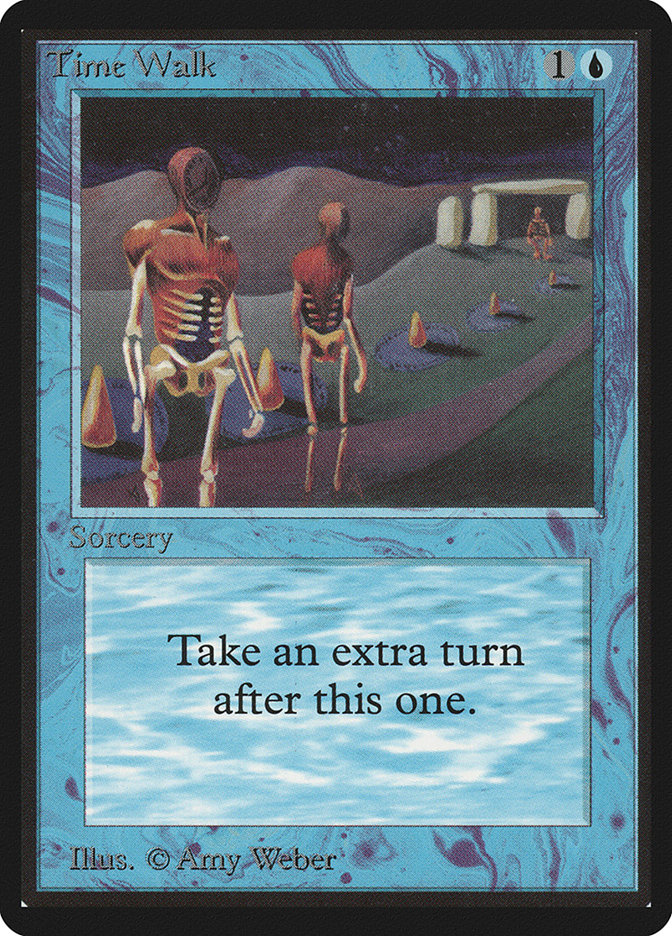
… can still be good even if it costs a lot of mana. One of the ways that we’ve seen it used successfully is in decks with a lot of planeswalkers, creating situations where the extra time lets a planeswalker just get out of control. Given enough time, this deck will potentially set up the following scenario:
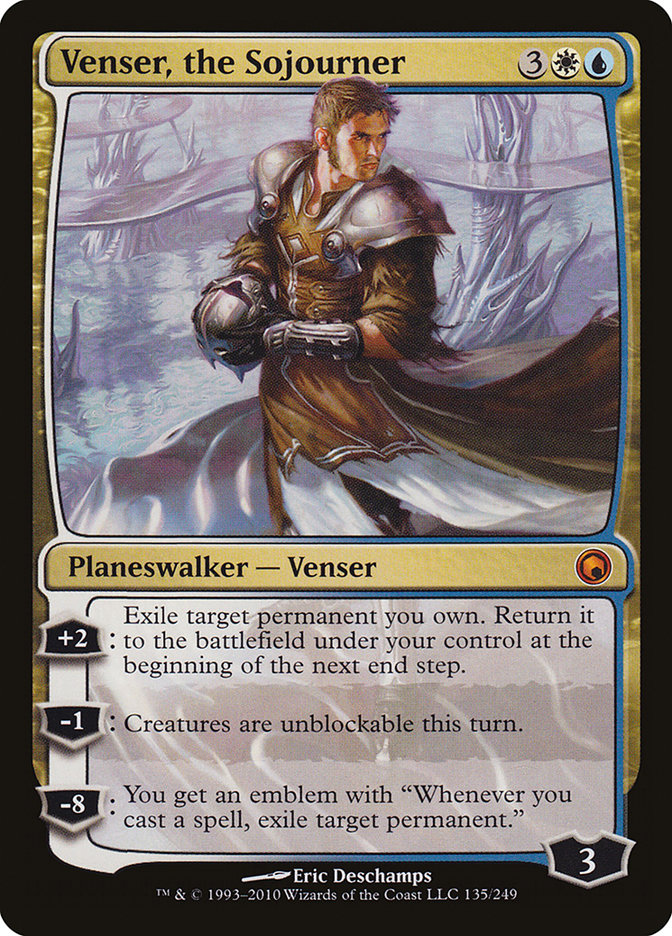
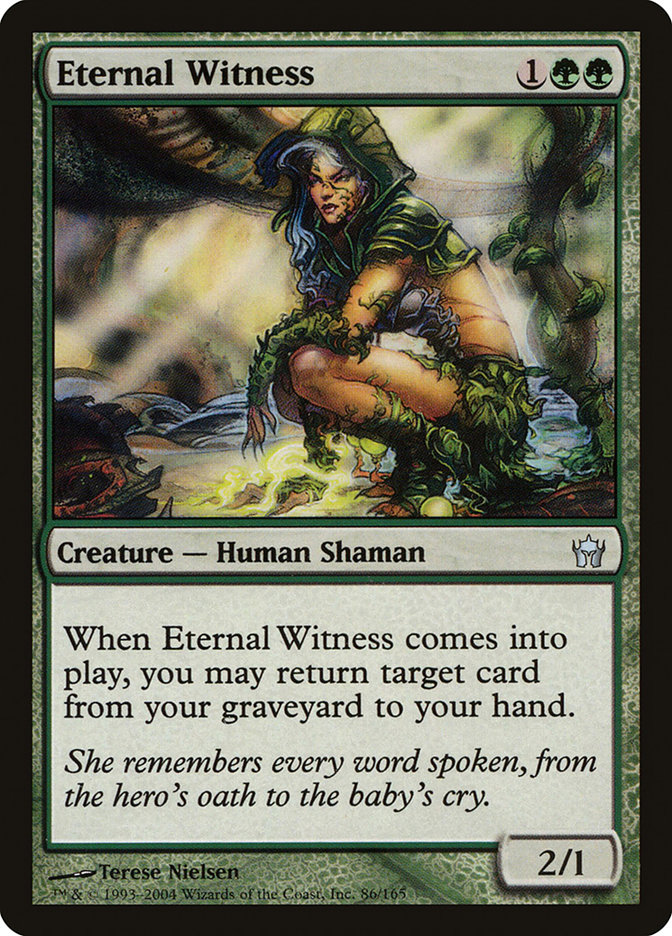
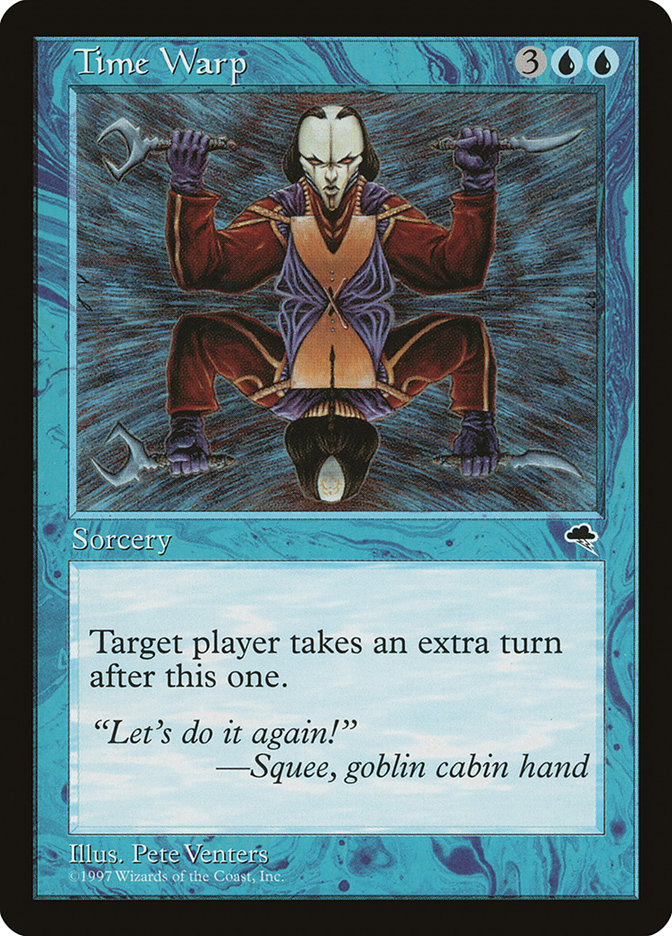
This might seem like a pipe dream, but the deck doesn’t need to go off and take all of the turns in the world for it to be absurd. Simply doing something like overloading an opponent on planeswalkers can be good, but when you add in a single Time Walk-style effect things can get silly indeed.
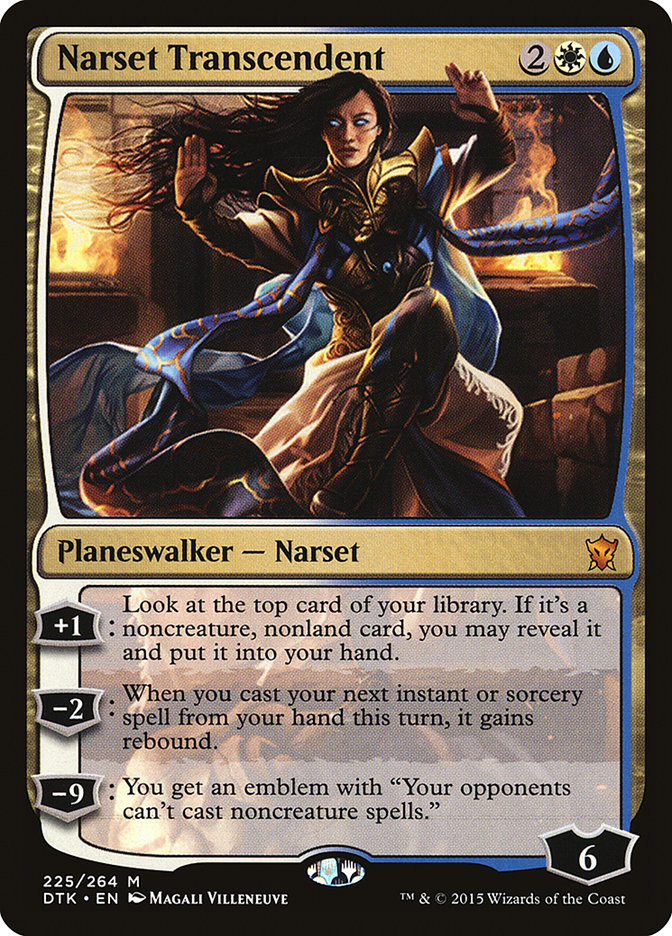
Narset makes an appearance as the newest addition to this deck. Aside from being a possible source of card advantage, doubling up on a Time Warp is truly boggling, and the game should basically be won if you manage to enact that little combo.
I know I expect to tinker with something similar to this; I’ve always loved casting a Time Walk!
Deck Five – Super Crazy Zoo
Creatures (19)
Lands (17)
Spells (24)
- 4 Lightning Bolt
- 4 Mishra's Bauble
- 4 Mutagenic Growth
- 4 Gitaxian Probe
- 4 Become Immense
- 4 Temur Battle Rage
Sideboard

This deck is pretty crazy, but I have to say, I’ve lost to it (and variants of it) more than a few time in the Modern queues this last week.
According to Shuhei Nakamura, the progenitor of the deck is apparently deckbuilder Atsushi Ito, and if you can read Japanese, I bet there are lots of insights to be gained from him directly. All-in Death’s Shadow decks aren’t exactly a truly new phenomena, but this list masquerades as a normal Zoo deck pretty well.
I’ve certainly lost to Temur Battle Rage in Standard, and it is even more devastating when it connects in Modern. However, making that happen is also even more difficult. Gitaxian Probe does a lot of good work here, checking to make sure the coast is clear before you go all-in. Some versions of the deck act almost like Infect decks, running Apostle’s Blessing as well.
I’m fully in support of this kind of crazy, and it might even still be good. I know I saw at least a few copies of this deck at 4-0s in several dailies in the last month, and I’m expecting that at least a few copies of this deck will show up on Day Two in Charlotte.
What I’m Playing
Quite honestly, I still don’t know. Here’s what I sent to my team earlier today:
Charlotte.
Decks I am considering. I have no front-runner.
- Jund
- Rock
- Sultai Infect
- Burn (Rgw, Rgb, and Rwb varieties)
- Esper (with Ojutai) Control
- Merfolk (U and U/w varieties)
I’m expecting to fill my luggage with Magic cards while I make that final decision. There is a good chance I’ll go rogue, but we’ll see!
See you in Charlotte for the Grand Prix!

